Discoloration of baby skin: Tinea Versicolor in Babies and Children
Posted onTinea Versicolor in Babies and Children
Tinea versicolor is a fungal condition that shows up as flat patches of discoloration on the skin. You may notice the patches on your child’s chest, on his back, under his arms, on his upper arms, or even on his neck and face. The patches can range from white to pink and from tan to dark.
Have you noticed small patches of discolored skin on your baby or child? If the patches are spreading (and possibly slightly itchy) it could be tinea versicolor skin infection. It’s unusual for babies and children to have tinea versicolor as it typically occurs after puberty, but it can happen.
Tinea versicolor isn’t contagious. It also can’t be fully cured. However, there are ways you can help your child manage the symptoms.
© Dr. P. Marazzi / Science Source
What is tinea versicolor?
Tinea versicolor (also called pityriasis versicolor) is a non-contagious skin condition that shows up as patches of discoloration on the skin. The word “versicolor” actually refers to the variable color of the spots or patches; they can be either hyperpigmented (dark) or hypopigmented (light). Most often they appear pink or tan on lighter skin, and as light patches on darker skin.
A normal skin yeast may overgrow and cause the uneven skin color to appear. Anyone can get tinea versicolor. However, it is most common in teenagers and young adults. The yeast, called Malassezia furfur, may also cause skin conditions like dandruff.
(See what tinea versicolor and other skin rashes look like in BabyCenter’s visual guide to children’s rashes and skin conditions).
Tinea versicolor symptoms
The rash typically begins on the upper arms, back, chest, or even on his neck and face. The discolored patches can range from white to pink and from tan to dark; if you look closely, you may be able to see very fine scales on their surface. It’s more noticeable in the warm, summer months, as the yeast prevents the skin from tanning in the areas of infection.
People with light-colored skin tend to get darker spots, while those with dark-colored skin seem to have lighter spots. In some cases, the skin turns white.
The patches can flake (like dandruff) and sometimes cause mild itchiness.
How do I treat tinea versicolor at home?
If the spots are small and mild and your child doesn’t seem uncomfortable, look for an over-the-counter dandruff shampoo with the active ingredients selenium sulfide or ketoconazole on the label. These ingredients kill the yeast.
- Wash your child’s hair with the shampoo and put a thin layer on all the affected patches, spreading it a couple of inches beyond their borders.
- Leave the shampoo on for 10 to 15 minutes before rinsing it off.
- Repeat every night for a few weeks, and the yeast should improve.
Unfortunately, it can take months for the skin color to return to normal. And the condition can come back again. If it does return, call your child’s doctor.
What if the home remedy for tinea versicolor doesn’t work?
If shampoo doesn’t work, call your child’s doctor. A provider can typically diagnose tinea versicolor just by looking at your child’s skin with a special lamp (called a Wood’s lamp). Sometimes, doctors scrape a small sample of skin from one of the discolored patches and look at it under a microscope – a procedure that is completely painless.
If it is tinea versicolor, the doctor will probably prescribe a topical antifungal medicine. If the case is severe, or the topical treatment doesn’t work, the doctor may prescribe an oral antifungal medication.
To prevent tinea versicolor from spreading further:
- Keep the skin cool and dry.
- Dress your child in loose clothing and avoid hot, humid air.
- Apply sunscreen whenever your child is exposed to the sun.
Will my child always have tinea versicolor?
Possibly. Once diagnosed with tinea versicolor, the yeast remains in your child’s skin.
As your child ages, she may become more self-conscious about her skin’s appearance. It will be important to remind her how common tinea versicolor is. She’ll also need to stay away from tanning beds, as they will make it appear worse.
Books to help your child cope:
- Malcolm Finney Medical Detective – The Case of… Itch and Rash by Erika Kimble (August 2011)
- Wonder by RJ Palacio (Jan 2014)
- Connect the Dots: Discovering Self-love with Skin Imperfections by Dahnisha Adams (February 2019)
Skin Color Changes in the Newborn
In newborns, skin color changes are often due to something happening inside the body. Some color changes are normal. Others are signs of problems. The changes described below can happen to any newborn. But skin color changes may be more obvious in babies born early, or prematurely, who have thinner skin than full-term babies.
Acrocyanosis
With acrocyanosis, the baby’s hands and feet are blue. This is normal right after birth. In fact, most newborns have some acrocyanosis for their first few hours of life. It happens because blood and oxygen are circulating to the most important parts of the body such as the brain, lungs, and kidneys rather than to the hands and feet. The problem goes away as the baby’s body gets used to new blood circulation patterns. Later, acrocyanosis can come back if the baby is cold (such as after a bath). This is normal, and will go away by itself.
Cyanosis
Cyanosis can be a blue color around the mouth or face, or over the whole body. It happens when the baby’s red blood cells aren’t carrying as much oxygen as expected. It may mean the baby is not getting enough oxygen. If you notice cyanosis, tell your baby’s healthcare provider or a nurse right away.
Mottling
Mottling occurs when the baby’s skin looks blue or pale and blotchy. There may also be a bluish marbled or weblike pattern on the baby’s skin.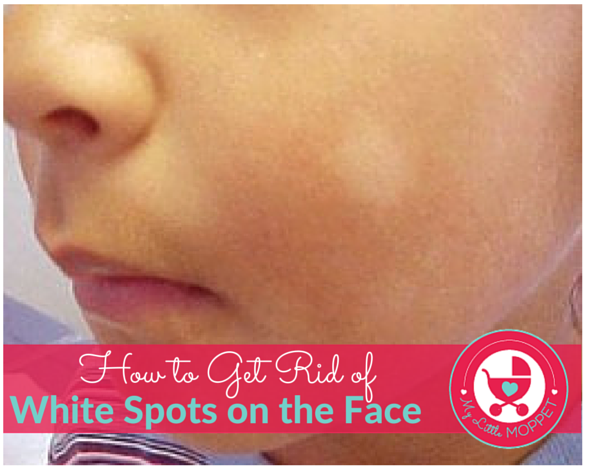
Jaundice
Jaundice is a yellowing of the skin and the whites of the eyes. It usually starts in the face, then moves down to the chest, lower belly, and legs. It happens because the body is breaking down red blood cells (a normal process after birth). The breakdown releases a yellow substance called bilirubin, which causes the yellow color. This substance is processed by the baby’s liver. It leaves the body through the urine or stool. Jaundice occurs in about half of all babies after birth, and usually goes away by itself. But sometimes a baby’s liver can’t process bilirubin as quickly as needed. This is especially true of babies born early, or prematurely.
Other skin color changes
Also tell your baby’s healthcare provider or nurse if you notice:
-
Redness around the baby’s umbilical cord or circumcision site, which could be a sign of infection
-
Bruising
-
Red spots (caused by broken blood vessels), which may be a sign of trauma or infection or could be due to a problem with the blood’s ability to clot
Skin of a newborn baby [structural features, functions, care, overview of hygiene products]
Skin problems of a newborn are a common phenomenon, every child will face them to one degree or another. These problems are due to adaptation to a new environment. During fetal development, the child is in an aquatic environment with a constant temperature, and after birth, the body needs to adapt to an air environment saturated with microorganisms at a lower temperature.
Consider the physiological characteristics of the skin of young children in more detail.
Features of the structure of the skin of a child
The skin of newborns consists of only 3 layers: basal, spiny and horny. The remaining layers are formed a little later.
Another physiological feature of the skin in infancy is its high water content and many vessels with thin permeable walls. Therefore, children’s loose skin is so prone to allergic reactions.
It is the skin that is one of the first organs that undergoes structural changes. The most important changes that adapt the skin to the environment occur during the first 6-8 weeks of a child’s life.
These include:
- increase in the density of cells in the stratum corneum of the skin,
- increase in the thickness of the epidermis and increase the barrier function of the skin of newborns,
- reducing the risk of pathogen entry
- maintaining optimal body temperature,
- as well as reducing transepidermal water loss.
These factors may influence the development of some skin conditions, but are not signs of any disease.
What is the skin pH of a newborn baby?
In the first days after birth, the skin of a newborn has a neutral pH — 7. But after 2-3 months it changes to a more acidic one — this significantly increases the protective properties of the epidermis.
Newborn skin functions
The skin of an infant, like the skin of an adult, has several functions.
But there are differences:
- Protective function. Very poorly developed, because the dermis is very delicate, ph is neutral, and the lipid layer is insufficient.
- Suction function. Is at an excellent level for the same reasons as described above.
- Respiratory function. 10 times more oxygen penetrates through the skin into the baby’s body than into the body of an adult.
- Excretory function.
Practically absent. It develops only by 3 months, and the full sweat glands begin to work by 3 years.
- Temperature control function. Also poorly developed, because the sweat glands are not developed.
- Synthetic function of (eg formation of vitamin D). It starts working only by 3-4 weeks from birth.
- Tactile function. Normally developed.
Skin color of a newborn baby
What kind of skin should a newborn baby have normally? At birth, in the first hours of life, the epidermis may be dark — with a bluish or purple tint. This feature is due to the still weak blood circulation. In the future, hemoglobin in the blood rises, the baby’s skin brightens and acquires a red tint. After 2-3 days, the redness disappears, the skin color changes again and may acquire a yellow tint. Normal pink or white skin color in the baby appears by the end of the first week of life.
Now let’s look at the typical skin problems that parents face.
Erythema on the skin of newborns
This is a typical and very first reaction of a newborn to the outside world. Expressed by local redness, which may be accompanied by a small rash. It is a variant of the norm, passes within 1-2 days, treatment is not required.
Skin care for the umbilical wound of the baby
It concerns absolutely all parents, so it must be carried out carefully and correctly in order to avoid complications such as omphalitis (inflammation of the navel).
The umbilical process and the umbilical wound must be cared for daily. Most often, the remnant of the umbilical cord falls off on days 4-5, and the navel is completely healed by about 10-14 days. In order for the healing process to occur quickly, and also to prevent infection, it is important to carefully care for the umbilical wound.
Keep your baby’s navel dry and clean. With a cotton swab dipped in a solution of hydrogen peroxide, we carefully process all the folds of the umbilical ring.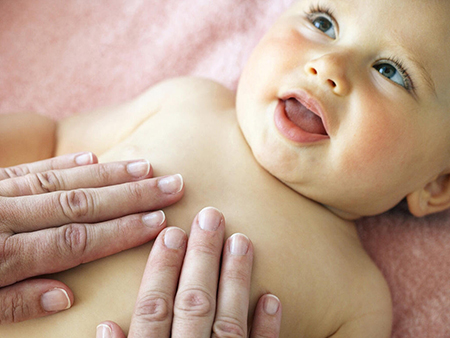
Navel care should be done 4-5 times a day. If there is swelling or redness of the skin around the navel, then you need to contact your pediatrician.
It is desirable to bathe a child already from the 2nd or 3rd day of life, but it is necessary to refrain from water procedures on the day when the umbilical residue disappears, and the next day you can resume bathing.
Dryness and peeling of the skin in a newborn
Peeling of the skin in a newborn can be both a normal variant and the result of improper skin care for a child. Approximately every third baby is faced with physiological dryness of the skin. Let’s see why a baby can peel off the skin and what to do in this case?
At birth, the baby’s skin is covered with primordial cheesy grease.
During the first 1-2 days of life, the original lubrication is completely absorbed into the skin, however, after birth, the baby is often cleansed of abundant lubrication, and if the baby is post-term (in this case, he is born practically without lubrication), the skin begins to peel off after a few days.
This is a natural process and this dryness can last up to a month. The skin of a newborn peels off both on the face and on the body. Particularly noticeable are small silvery scales on the arms and legs.
Baby skin care during physiological dryness
Peeling of the skin in a newborn cannot be prevented, but it is possible to help restore the skin cover by using moisturizing lipid-replenishing agents. It is only necessary to remember that the texture of such products should be very light (milk, emulsion, moisturizing lotion), they should be allowed to be used to care for the delicate skin of babies.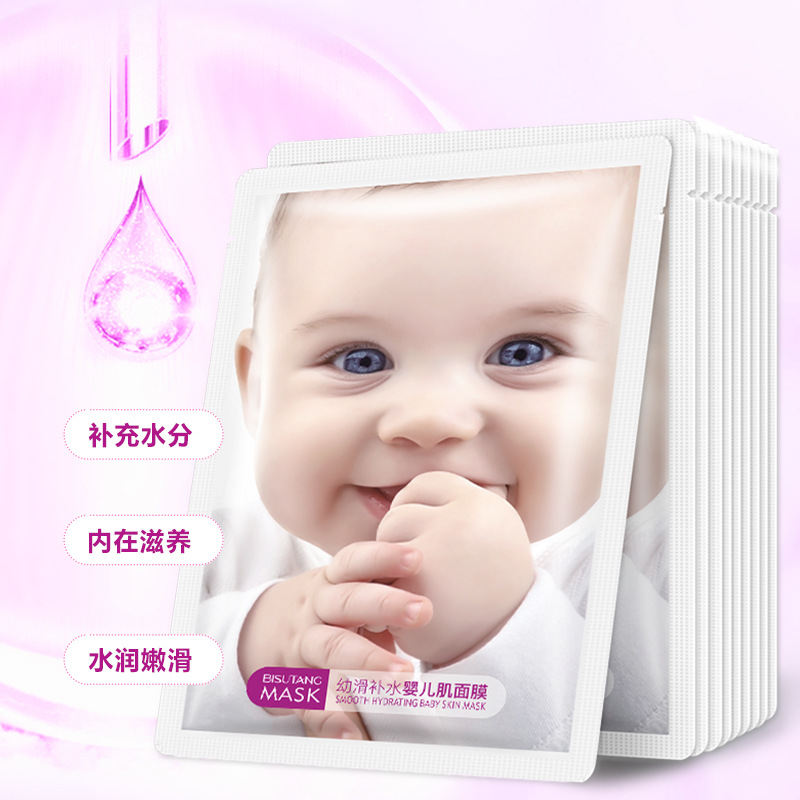
One such product is Lipikar Lait Milk for dry and very dry skin of babies, children and adults. Enriched with shea butter, cold cream and thermal water, the light texture of the products is instantly absorbed without leaving a sticky, greasy feeling on the skin.
Crusts on the baby’s head
This skin condition occurs in almost 50% of babies. It is sometimes called «gneiss», «baby cap» or «seborrheic crusts» because they resemble seborrhea. In infants, this is not a disease, but another of the adaptive responses. The reason for the appearance of crusts is the imperfect work of the sebaceous and sweat glands under the influence of transmitted maternal hormones during fetal development.
With age, the hormonal background of the child normalizes, the glands begin to work properly, and after a short period of time, this skin condition disappears. Crusts can appear regardless of whether the baby’s hair is already growing or not. More often, crusts and greasy scales are not very pronounced and appear mainly in the region of the crown.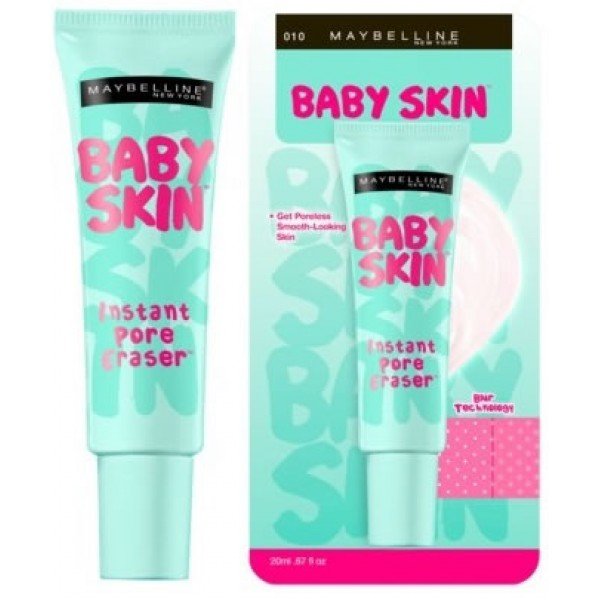
Baby’s skin care during gneiss
In no case do not try to mechanically tear off the crusts, there is a high risk of harm to health: you can easily injure the skin and cause an infection. In order to remove the crusts, you must first soften them, and then, while bathing, rinse gently so that they can be removed painlessly.
It is permissible to apply sterile oil (vaseline, olive, vegetable) to the scalp and put on a cotton cap for 1 hour — this will soften the crusts. After that, the cap can be removed and gently, gently massage the head with your fingertips. Then you need to bathe the baby and gently wash off the lagging crusts from the skin. Not all crusts may come off at one time, it will be necessary to repeat the procedure several times over several days.
For gentle gentle bathing, Lipikar AP+ Oil Lipid Replenishing Emollient Bath & Shower Oil can be used to gently cleanse and soothe dry skin in babies, children and adults.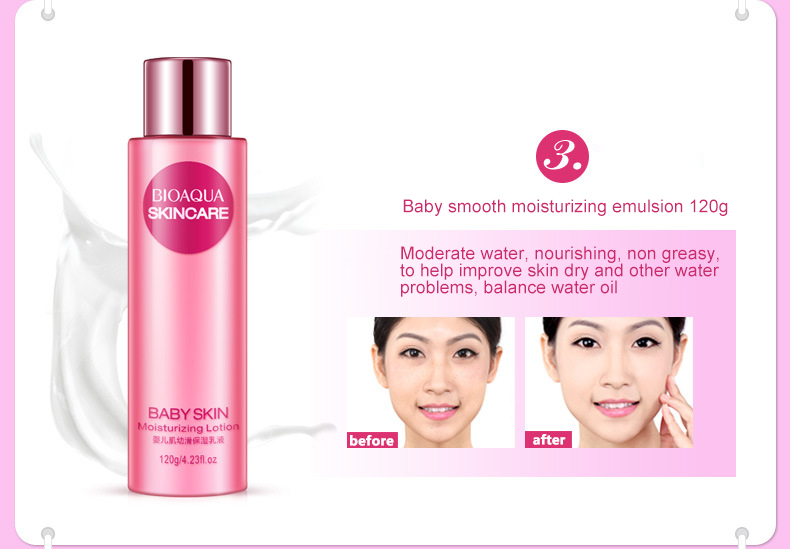
Neonatal acne
Also a fairly common skin problem in newborns that can be encountered. It occurs in about a third of babies. In appearance, it resembles adult acne, looks like red pimples with a white top. They can pop up on the skin of the face (cheeks, forehead, nose), sometimes on the ears, less often on the neck and back. The rashes do not itch and do not bother the child. The reason for their appearance are maternal hormones transmitted during fetal development. As the hormonal background normalizes, this problem on the skin is resolved. Sometimes a pediatrician may prescribe drying agents if there are a lot of rashes.
Prickly heat in infants
Another common problem in babies. It manifests itself as a multiple rash on the skin in the form of red “dots” and small pustules, localized on the face near the hairline, neck, upper chest and back.
In order to prevent prickly heat on the skin, it is necessary to choose the right clothes, not overheat the baby and observe hygiene. Indoors, it is recommended to maintain an air temperature of 20-22 degrees, and at night — about 18°C. Wear clothes made of natural cotton fabrics for your baby so that the skin “breathes”. With enough bathing, proper care, prickly heat usually goes away on its own. For prevention, use regular bathing and air baths.
For bathing it is recommended to use Lipikar Gel Lavant , it gently cleanses and protects the sensitive skin of babies, children and adults, soothes the skin, restores the natural protective barrier.
Diaper rash in newborns
Perhaps the most common and the most worrying problem for parents. Skin diaper rash is manifested by redness and the appearance of erosions on the skin.
The causes, as with prickly heat, are overheating of the skin, and in the buttocks and groin area, this is contact with urine and feces. Diaper rash in the groin has a special name — baby diaper dermatitis.
To avoid such skin problems in a newborn, it is necessary to wash the child after each toilet (if it is not possible, use wet wipes), and also to keep the skin open longer, to carry out air baths so that the folds are completely dry.
In case of redness and irritation, it is recommended to use healing repair products. Revitalizing and healing skin treatment for babies, children and adults Cicaplast Balm B5 has a rich, nourishing texture with Panthenol, which soothes dry, irritated skin, and [Copper-Zinc-Manganese], a complex with recognized antibacterial properties.
It is acceptable to apply the balm on reddened skin, after application, you need to allow the product to be completely absorbed — arrange an air bath at this time for the baby, you can add a light stroking massage to the baby, which will help him calm down and promote the development of the baby. Then put on a fresh diaper.
It is important to remember that most of the listed skin problems occur due to the adaptation of the baby’s skin to the outside world, as well as hormonal surges and are not a sign of illness. This means that over time, the baby will outgrow most of the «children’s» problems that bother not only the baby, but also worry moms.
Proper hygiene of the skin of babies is important, regular examination of the baby’s skin, moisturizing if there is a tendency to dryness and consultation with a neonatologist / pediatrician / dermatologist if atypical skin manifestations occur that bother the baby and mother.
Types of neoplasms on the skin in children
Neoplasms on the skin is a lesion of the skin as a result of the growth of tissue cells in the form of tumor pathological formations that can be benign, malignant and have a borderline character (precancerous).
Neoplasms can exist on the skin of a child from birth, some of them appear over the years, but all of them can grow, change, metastasize to other organs, cause complications and lead to death.
Causes of appearance
Everyone knows that the skin of a child is delicate and sensitive to any external influences, and not only infants, but also young children and adolescents should be protected from such a factor as direct sunlight, which is one of the causes of skin cancer . Some tumors of the epidermis do not depend on external causes and are congenital or hereditary.
Unlike adults, benign neoplasms on children’s skin rarely turn into malignant ones, but it is much more difficult to detect them on the body of a small person. The most active age for the appearance of tumors on the skin in a child is considered to be the period up to 8 years, some neoplasms are also characteristic for the age of 8-15 years, but they grow slowly and are mostly inconspicuous.
Do not sound the alarm because of every mole that appears on the body of the baby, because. Skin cancer is a rather rare disease for children, but there are some types of neoplasms (for example, large congenital pigmented nevi) that require constant monitoring and control by a doctor. Large pigmented moles can grow, change color, be injured by clothing, which can lead to their transition to a malignant stage.
Types of neoplasms
- Benign neoplasms . These include warts , nevi , papillomas , lipomas , angiomas , adenomas , lentigo, aterfibromas, neuromangioma, libroma. The last two types often occur in children in infancy, never degenerate into malignant and do not pose a danger to the child. Warts and papillomas are typical for preschoolers and adolescents, but they do not threaten the health of the child. As a rule, they are removed for aesthetic reasons;
- Borderline neoplasms (precancerous ) in children.
These include xeroderma pigmentosa and keratoacanthoma. Other precancerous neoplasms, such as cutaneous horn, Bowen’s disease and other diseases, are more characteristic of adults and the elderly;
- Malignant neoplasms. This type of skin tumors includes melanoma, sarcoma, neurofibrosarcoma, hemangiosarcoma, epithelioma.
Here are some symptoms that parents should watch out for:
- discoloration of neoplasm;
- its rapid growth;
- growth of one of the areas of neoplasm in a child;
- itching, burning in the area of the neoplasm;
- neoplasm bleeding;
- the presence of inflammation on a neoplasm in a child;
If any neoplasms on the child’s skin cause you concern, do not put off a visit to a dermatologist. After all, only a competent specialist will be able to determine what type of skin tumor the neoplasm belongs to.
In our medical center «Medicenter» examination of neoplasms on children’s skin is carried out — dermatoscopy .


 Practically absent. It develops only by 3 months, and the full sweat glands begin to work by 3 years.
Practically absent. It develops only by 3 months, and the full sweat glands begin to work by 3 years.  These include xeroderma pigmentosa and keratoacanthoma. Other precancerous neoplasms, such as cutaneous horn, Bowen’s disease and other diseases, are more characteristic of adults and the elderly;
These include xeroderma pigmentosa and keratoacanthoma. Other precancerous neoplasms, such as cutaneous horn, Bowen’s disease and other diseases, are more characteristic of adults and the elderly; 